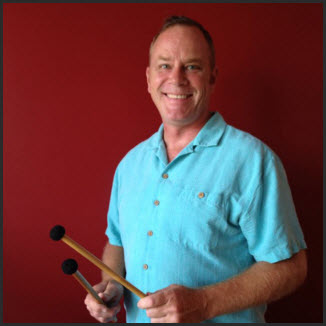In this video I demonstrate how to tune Timpani while playing. This is an important technique to practice so that you can learn where your pedals need to be for the notes that are playable on your drums and it helps you with your ability to accurately tune your drums very quickly.
Tuning quickly is very important especially when the music is playing around you and you only have a second or two before you have to play a new note on your drum. If you only played music by Mozart and Beethoven you wouldn’t have to really worry about tuning so quickly, but modern orchestral and wind ensemble timpani writing can be extremely challenging for the timpanist who must tune all four drums quite often during one piece of music.
Timpani Tuning Exercise
Playing scales or easy songs that you know on the timpani is a great way for you to learn how far you must move the pedal in order to play the next note that you want. For example; play a scale from Bb to F and back down again on your 26” drum and Play Three Blind Mice.
In this video I demonstrate playing a scale and an easy song that we all know.
Timpani Tuning Technique
Without over complicating things remember that you must move your foot at the same time as you strike the drum, but you must move your foot very fast and stop at the right position. With careful practice and playing scales and tunes you’ll soon be able to tune on the fly without your timpani sounding like a slide whistle.

Hi – after being made to more-or-less quit brass after a car accident, I’ve gone to me second instrument and have taken to getting our band’s “tap timps” out and kitting myself up…. Any tips there for swift tuning on these delightful instruments?
Check out my lesson titled “How to Tune Timpani” on this site.
Will moving a Timpani make it go out of tune?
Thanks for your question. When you move timpani its best to tune the drum to a high pitch so that the head is nice and tight because its not good for the tuning if the drum head slips side to side. When the drum head is put on it is “seated” which means that the mylar of the head is creased around the lip of the drum. If the head moves from this seating the tuning will be impaired. Also, make sure that when you move a drum you lift or pull it from the struts and not the rim because you may pull the head off of its seating. Bottom line, just be careful when you move the drum.